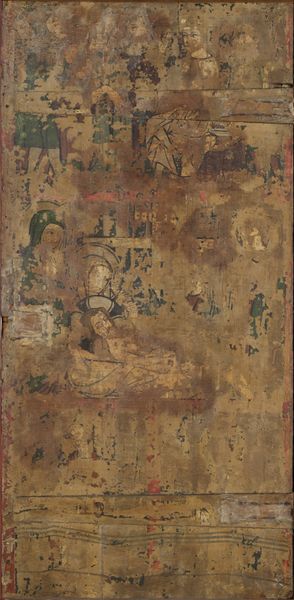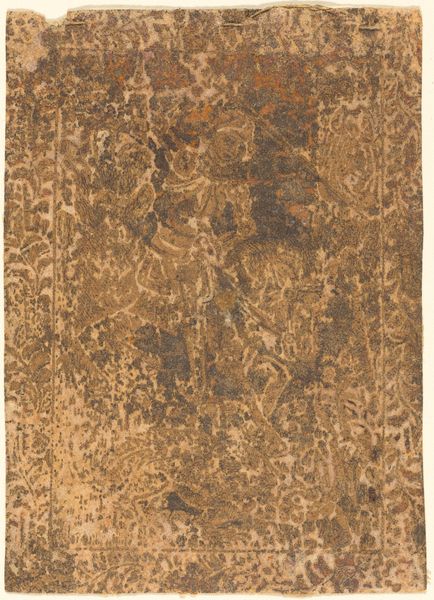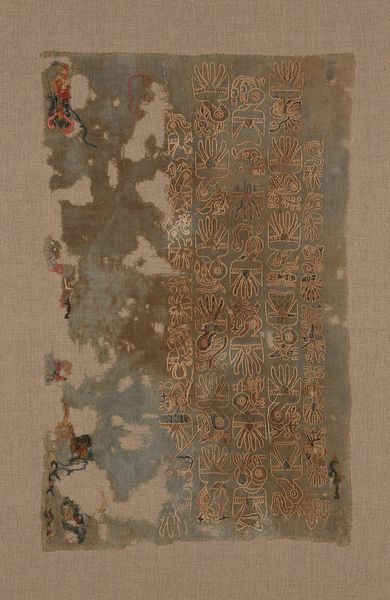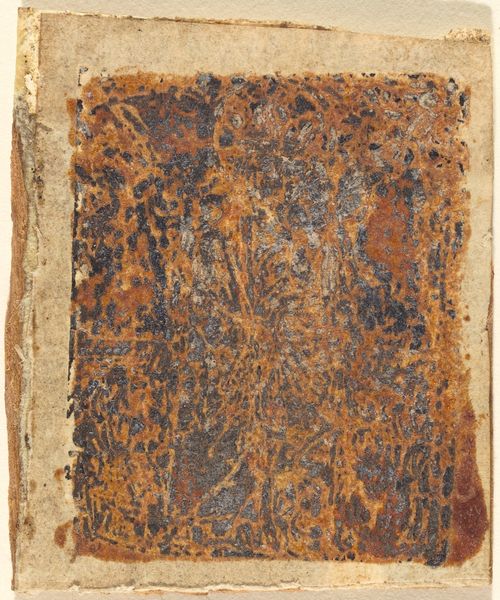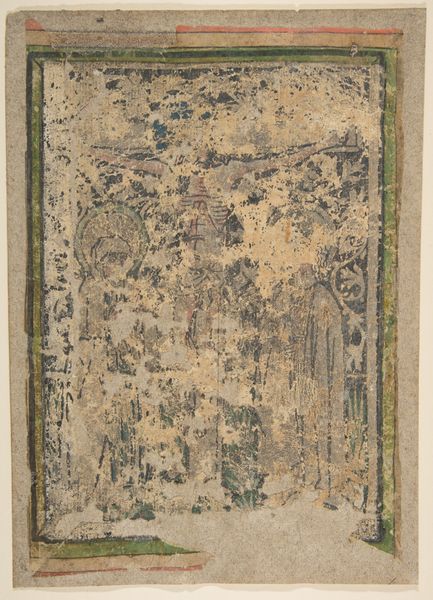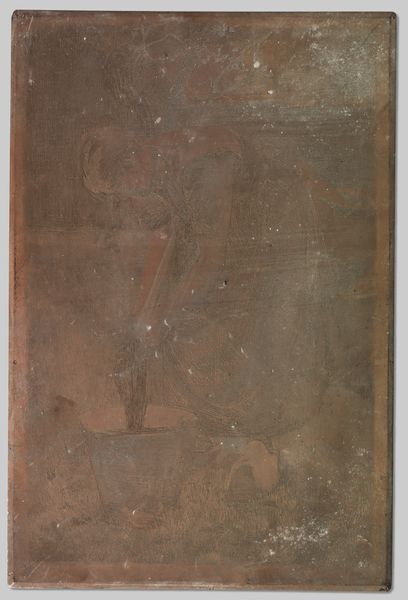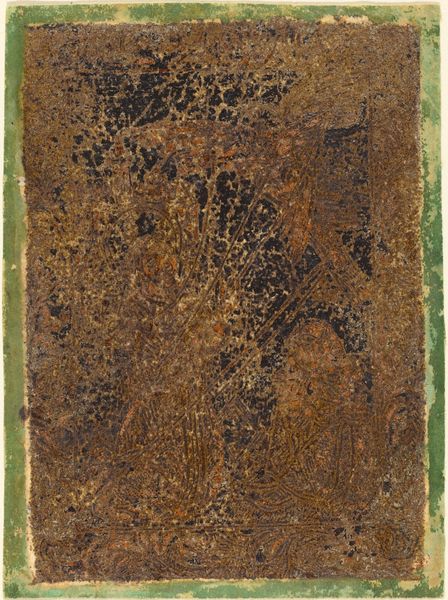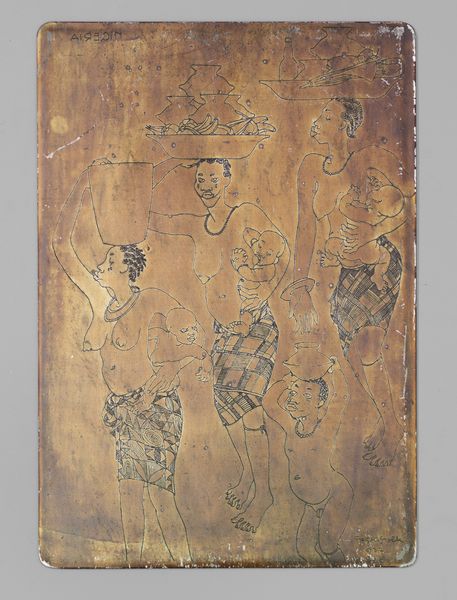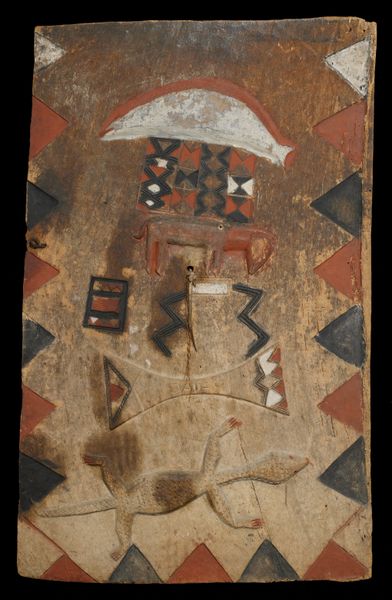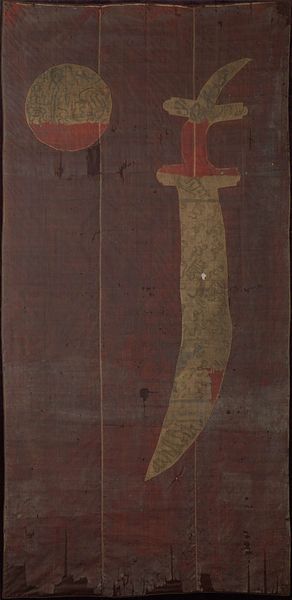
Arrest of Jesus, Crucifixion, St. Nicholaus (_) and St. Catherine (painted surface heavily damaged) c. 1323 - 1335
0:00
0:00
panel, tempera, painting, oil-paint
#
portrait
#
medieval
#
panel
#
narrative-art
#
tempera
#
painting
#
oil-paint
#
gothic
#
figuration
#
oil painting
#
jesus-christ
#
crucifixion
#
watercolour bleed
#
history-painting
#
italian-renaissance
Dimensions: 153.7 x 119.2 x min. 2.9 cm
Copyright: Public Domain
Curator: Before us is a tempera and oil painting on a panel, likely crafted between 1323 and 1335 by an anonymous artist. The work, titled "Arrest of Jesus, Crucifixion, St. Nicholaus and St. Catherine," sadly shows its age with significant surface damage. Editor: Even in its deteriorated state, there’s a palpable sense of solemnity. The composition, though fragmented, evokes a profound feeling of loss and contemplation, like glimpsing echoes of devotion across centuries. Curator: Indeed. Looking closely, we can still discern traces of the artist's process: the careful application of gesso to prepare the panel, the layering of tempera, and then perhaps the addition of oil glazes. The physical materials themselves carry the history of the artwork’s creation and its subsequent life. Editor: And what a life! Consider the choice of depicting both the arrest and crucifixion of Jesus, flanked by St. Nicholas and St. Catherine. The crucifixion, a universal symbol of sacrifice and redemption, paired with the narratives of these saints...it speaks volumes about the values and beliefs that resonated deeply within the society that created it. Curator: Precisely. And one must also consider where the materials came from; who were the merchants selling pigments at that time and how costly was this? And of course, consider also, the conditions under which this artwork would have been made. The availability of resources would certainly inform the quality and scale of an artwork such as this. Editor: Absolutely. The iconography also gives insight into how religious narratives were being interpreted and disseminated visually in that period. St. Nicholas, with his association with charity and miracles, alongside St. Catherine, patron of knowledge and philosophy, add layers of meaning. The image presents both earthly benevolence and heavenly wisdom, so viewers have different ideas or concepts to consider. Curator: Despite the surface damage, this panel offers us a tangible connection to the past, shedding light on medieval artistry, labour, trade, and the use of precious materials. Editor: For me, even with its fragmented state, it’s the enduring power of those central Christian symbols which are truly remarkable, continuing to reverberate even through centuries of change and wear.
Comments
No comments
Be the first to comment and join the conversation on the ultimate creative platform.
